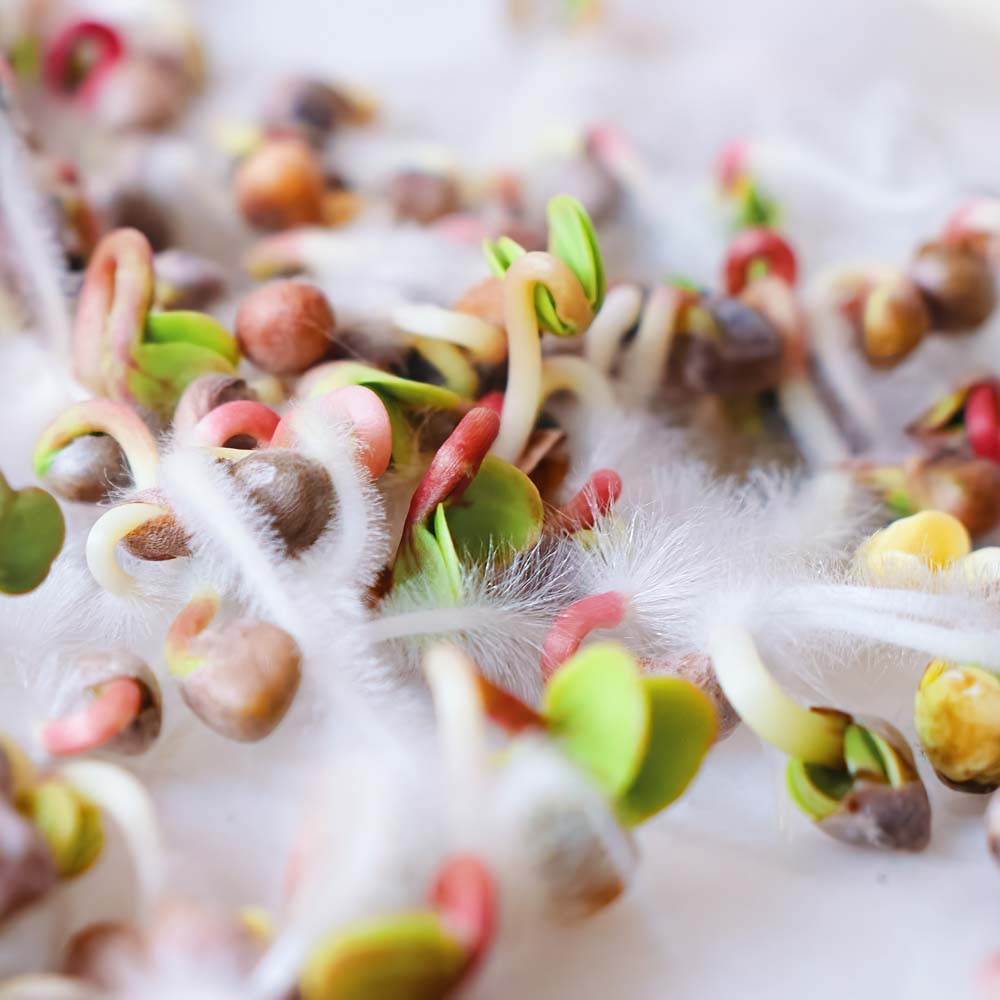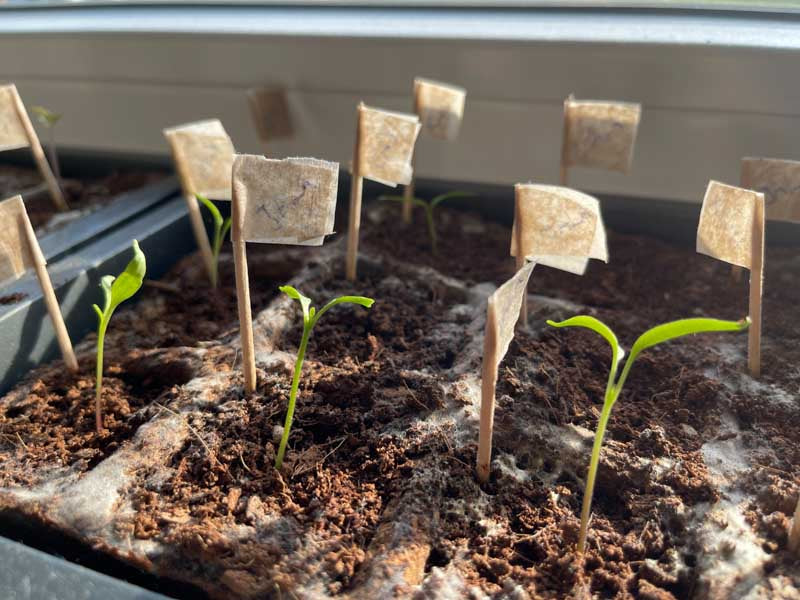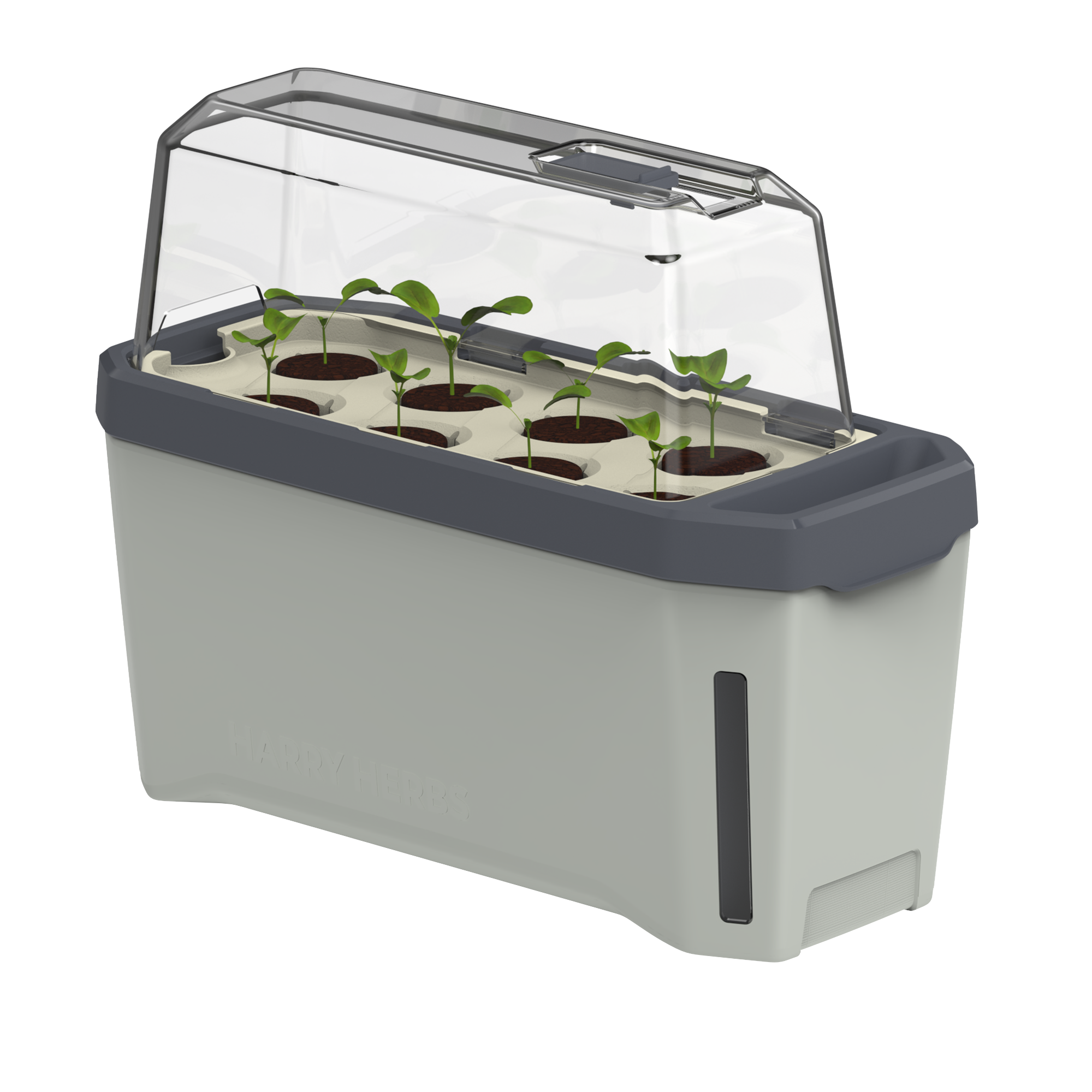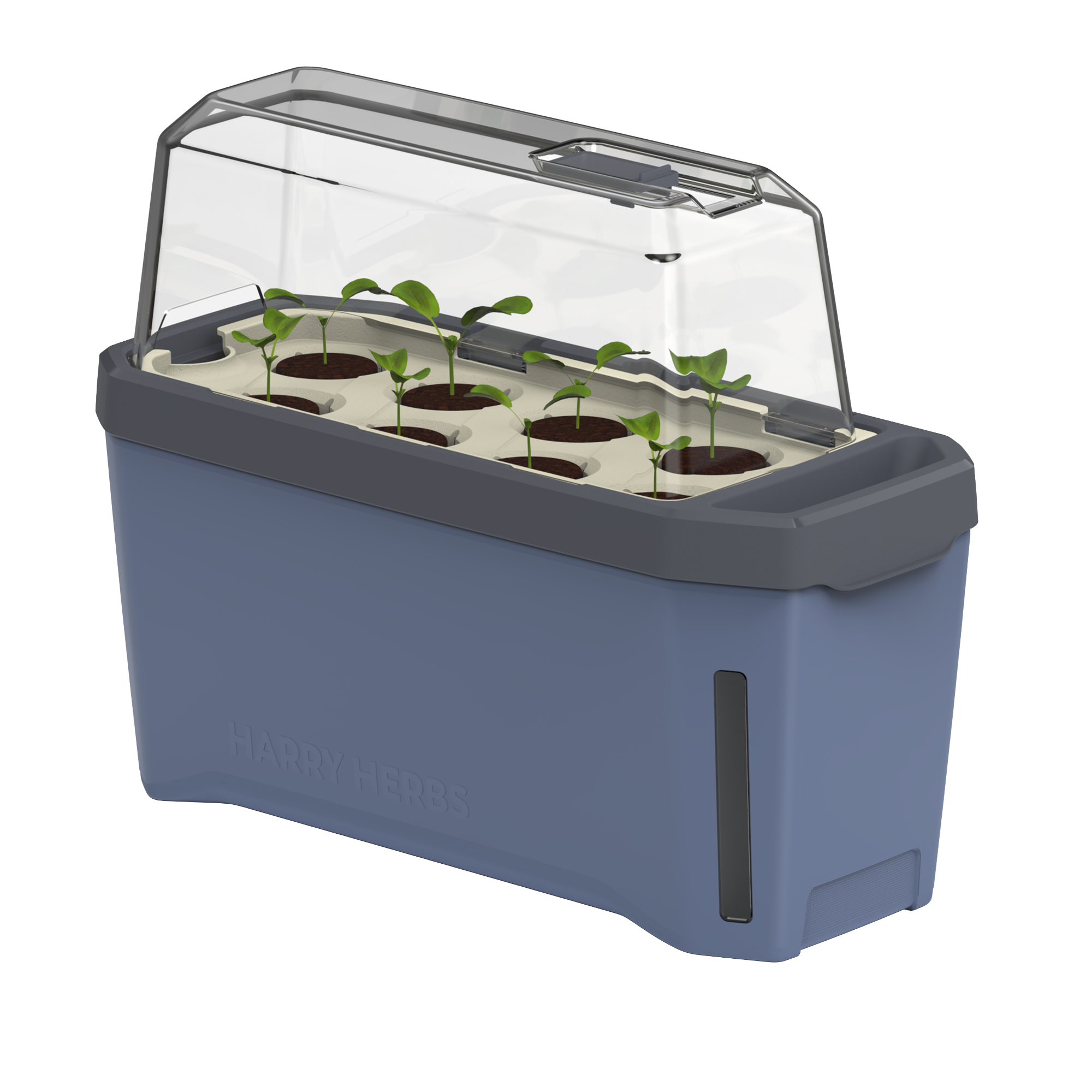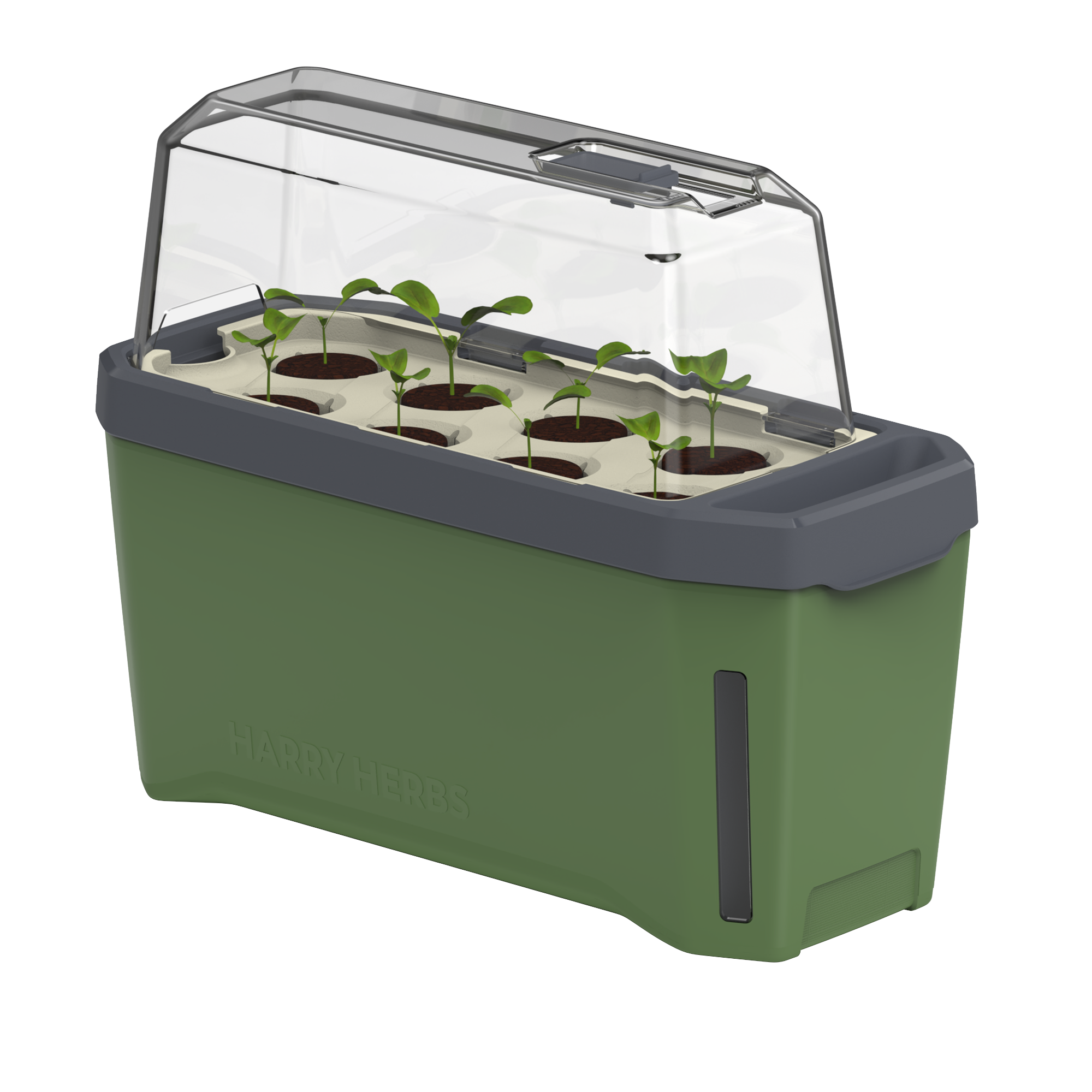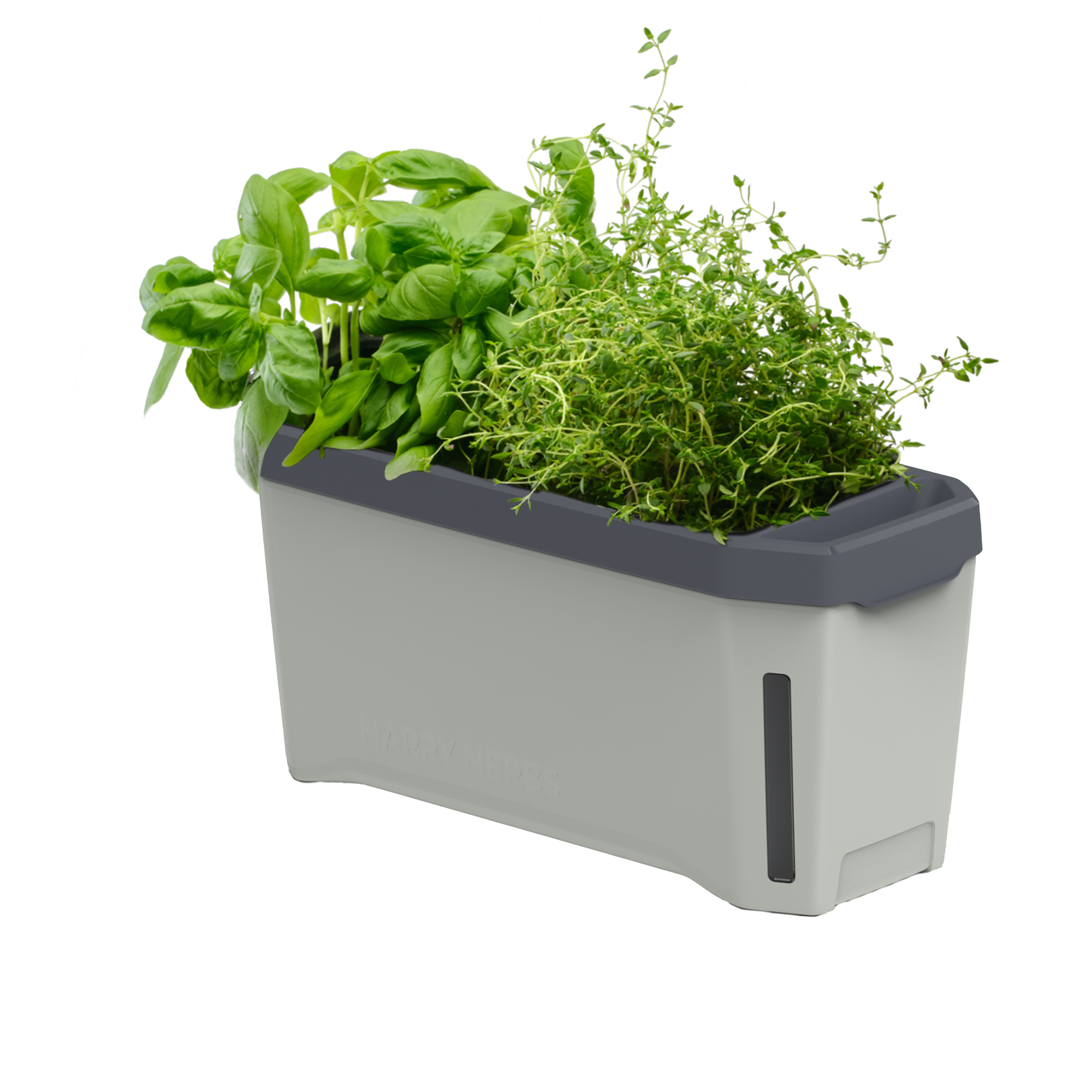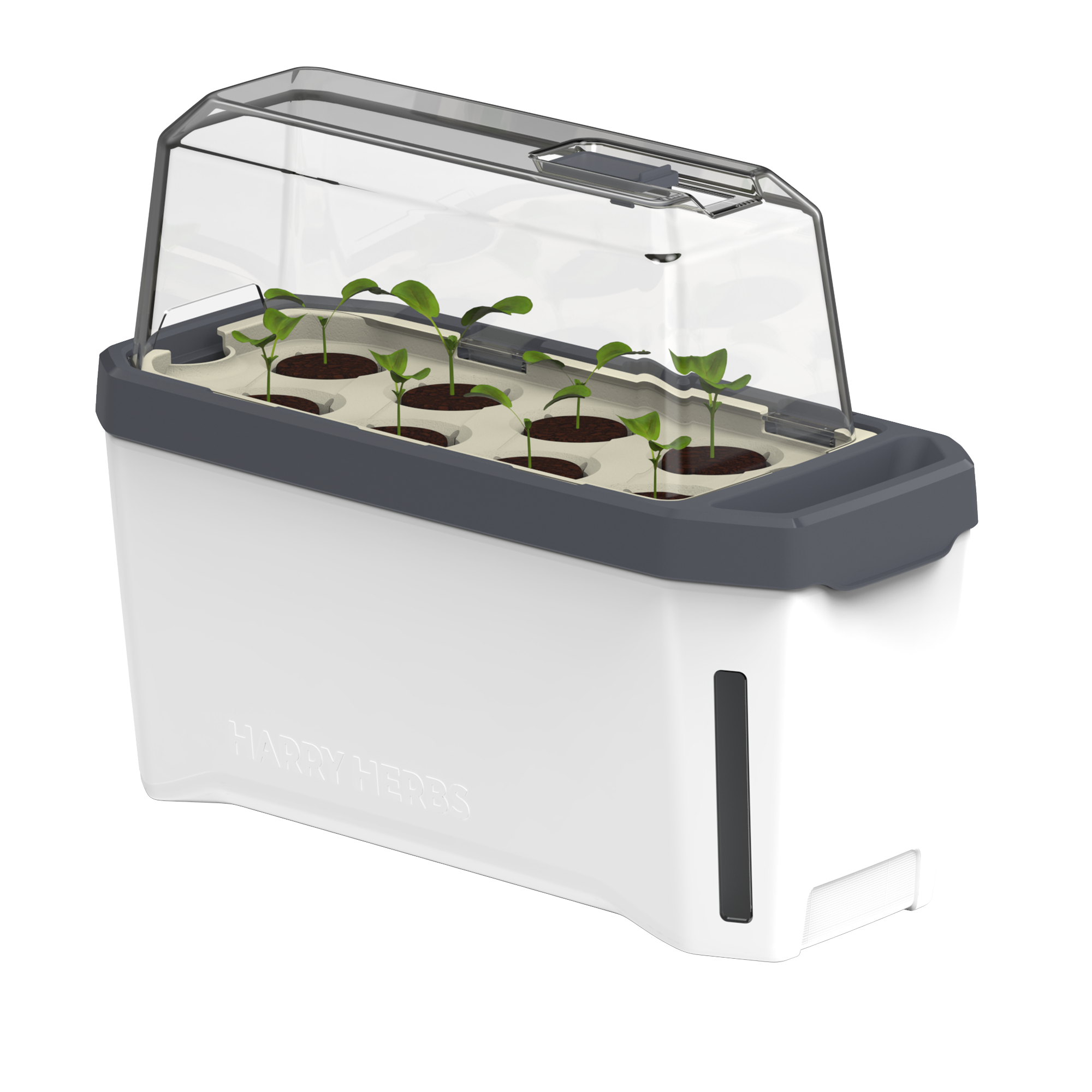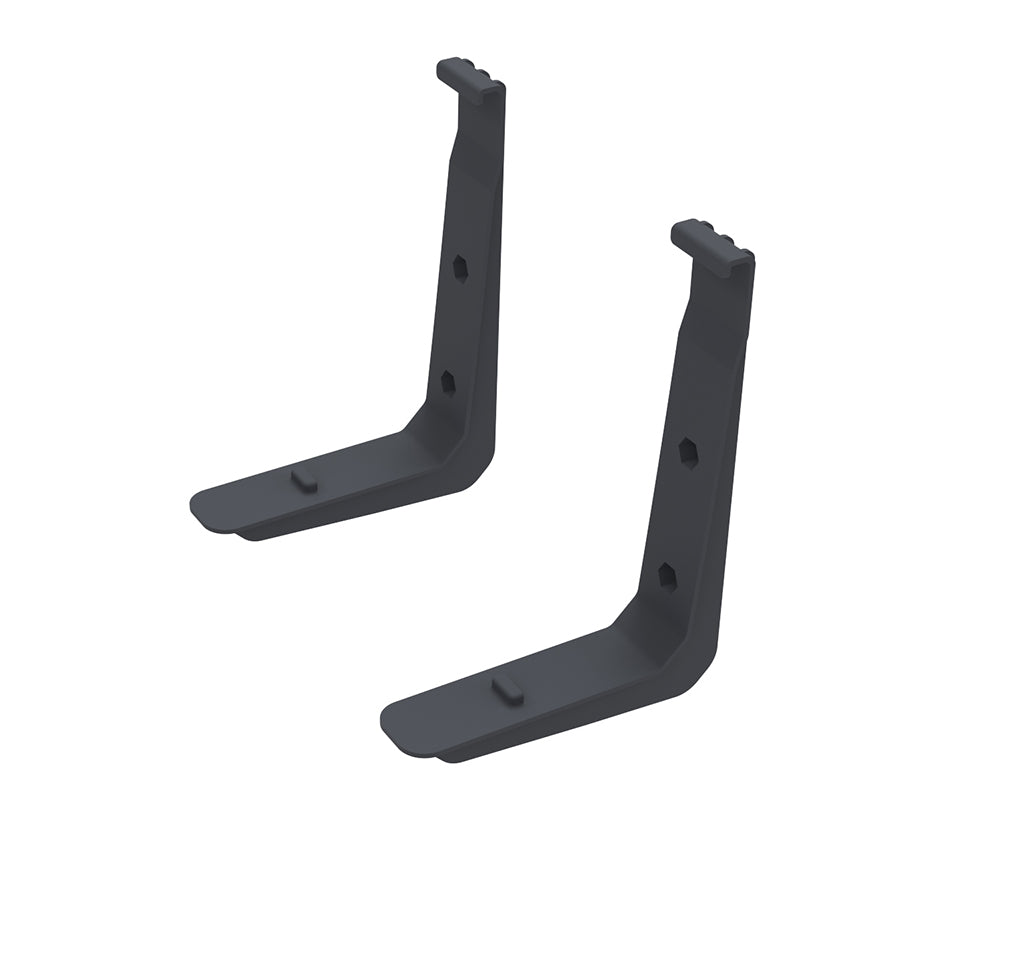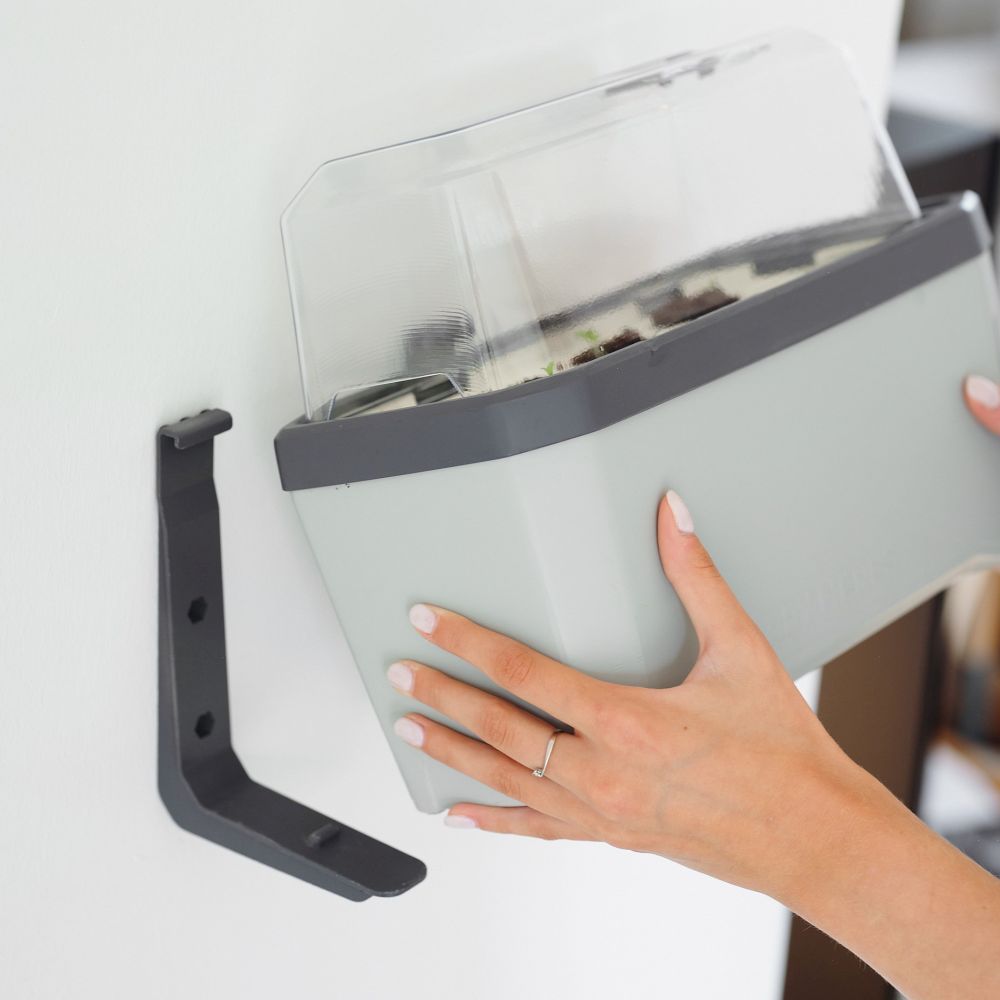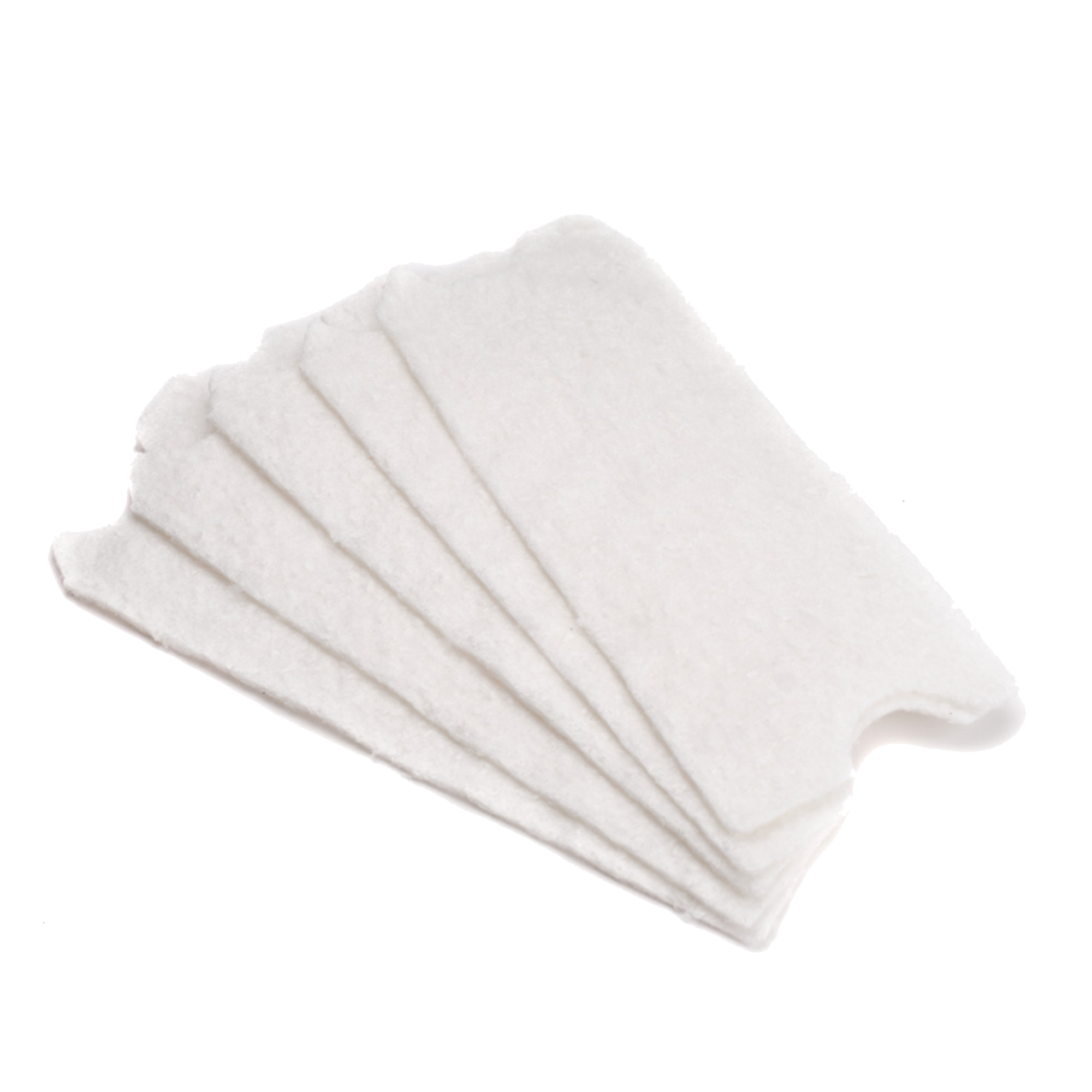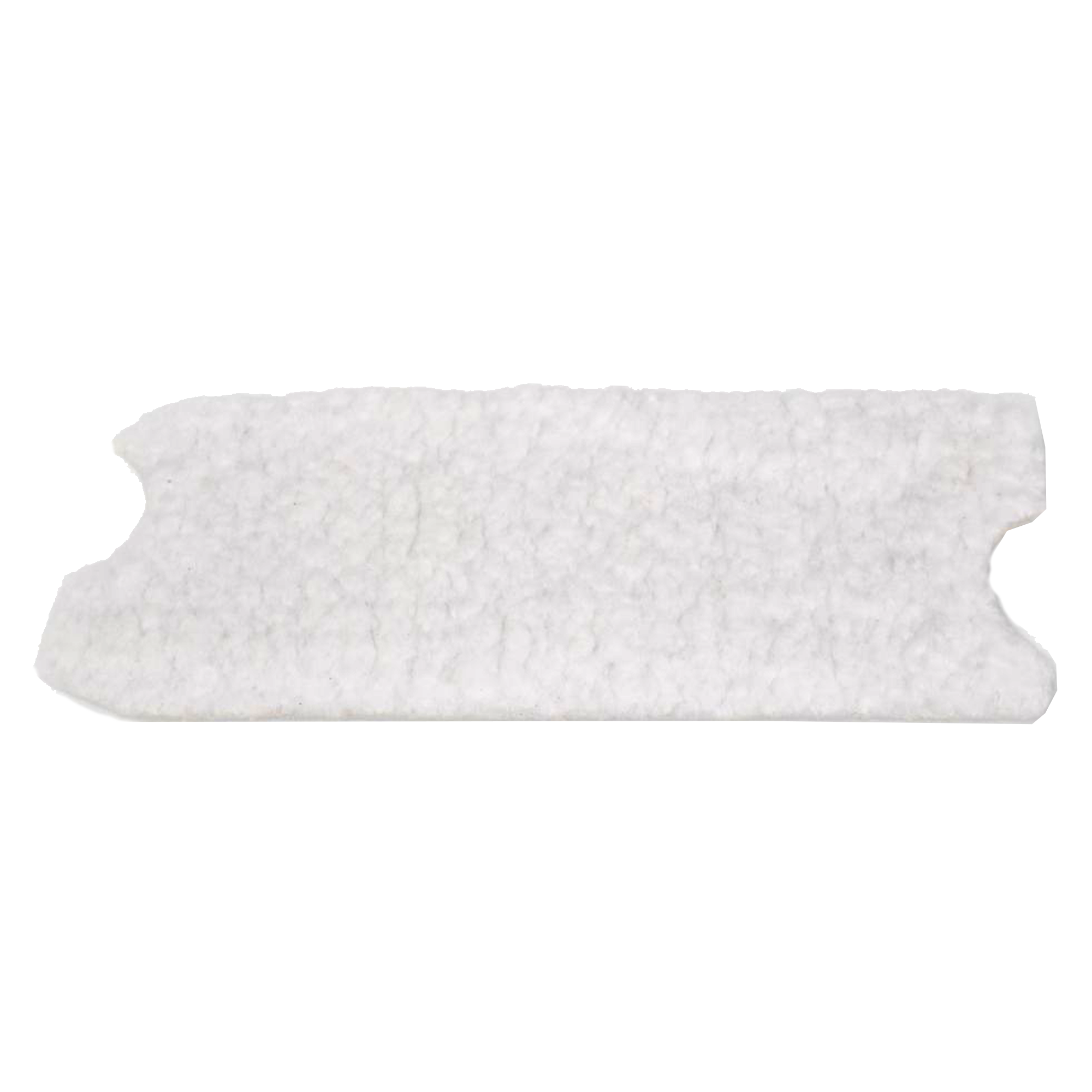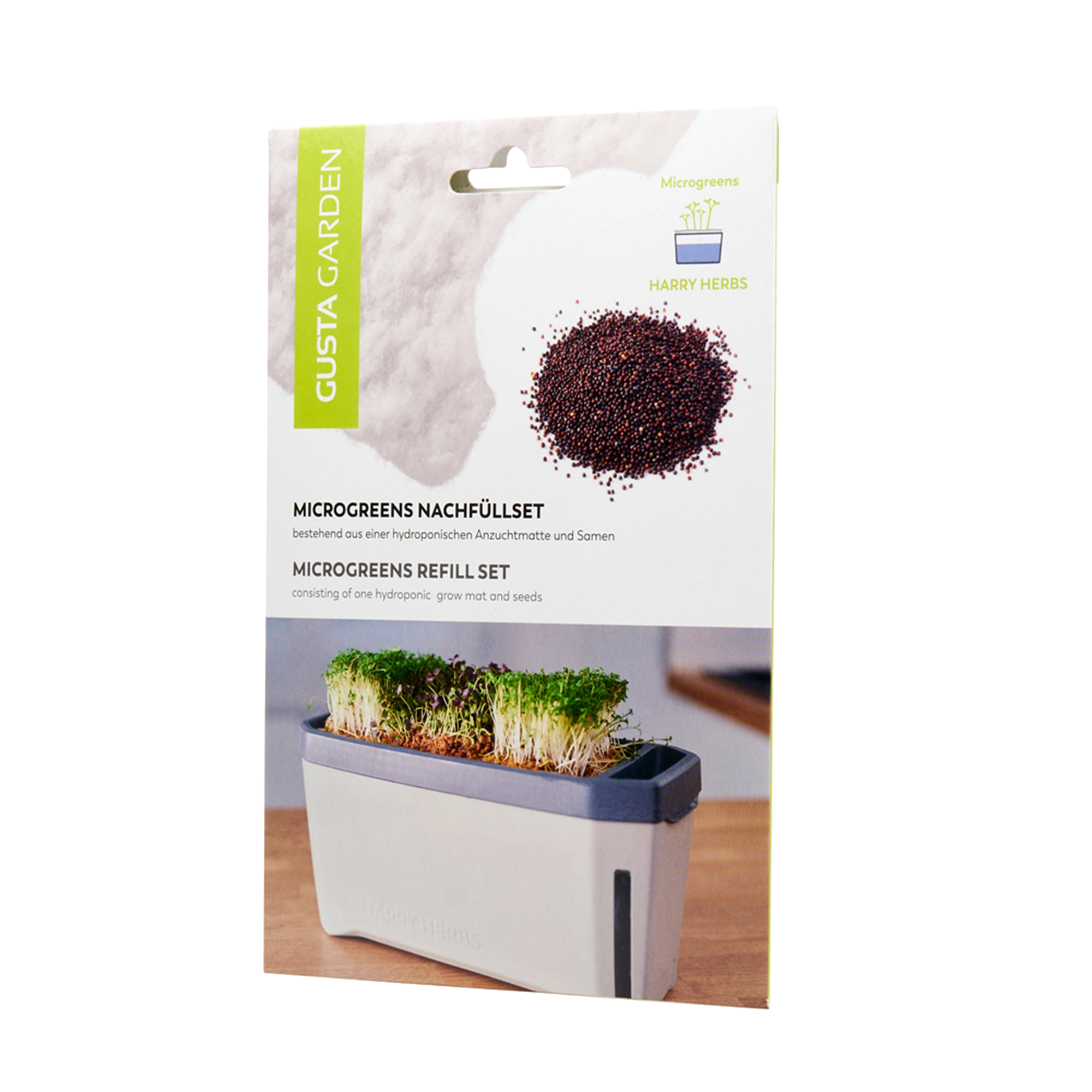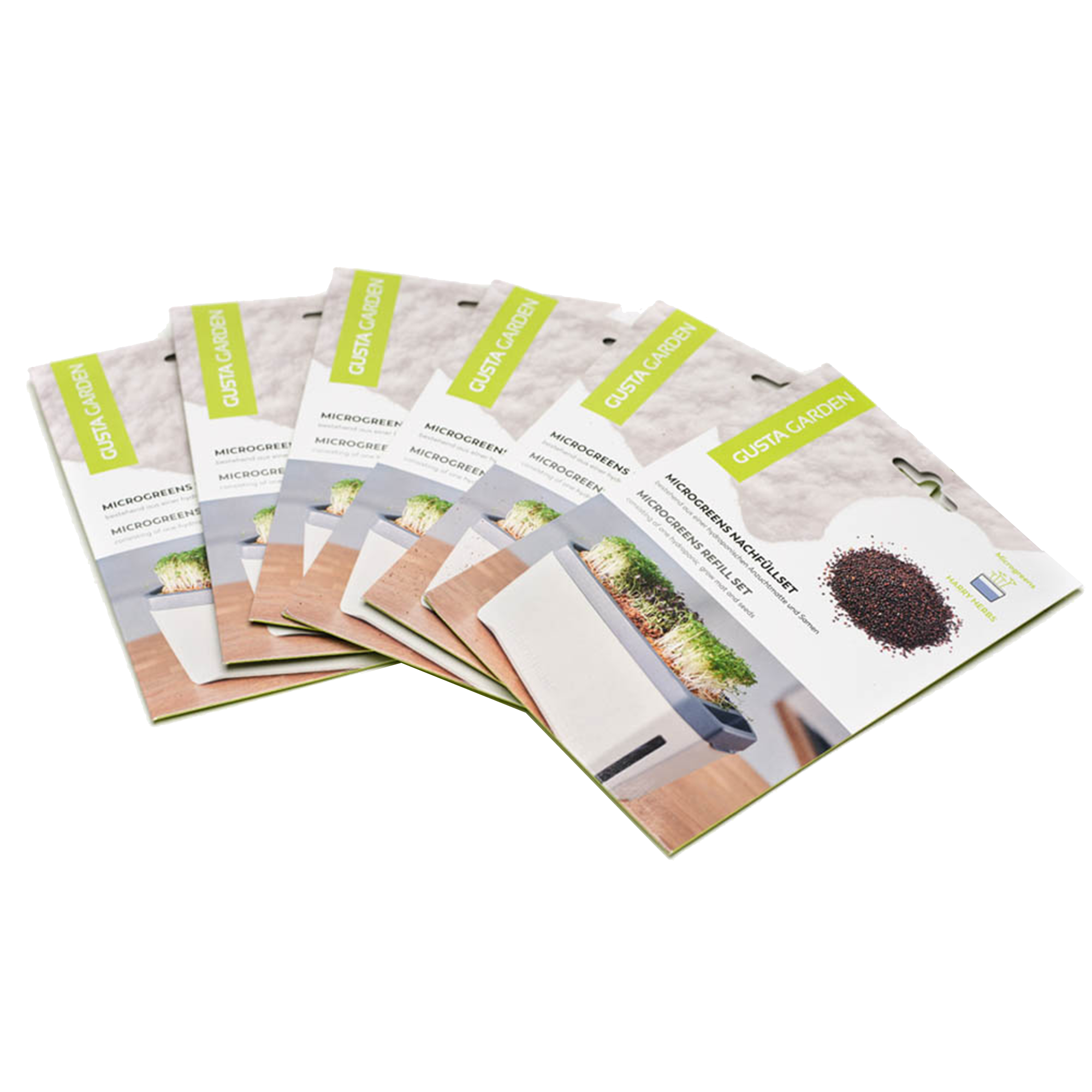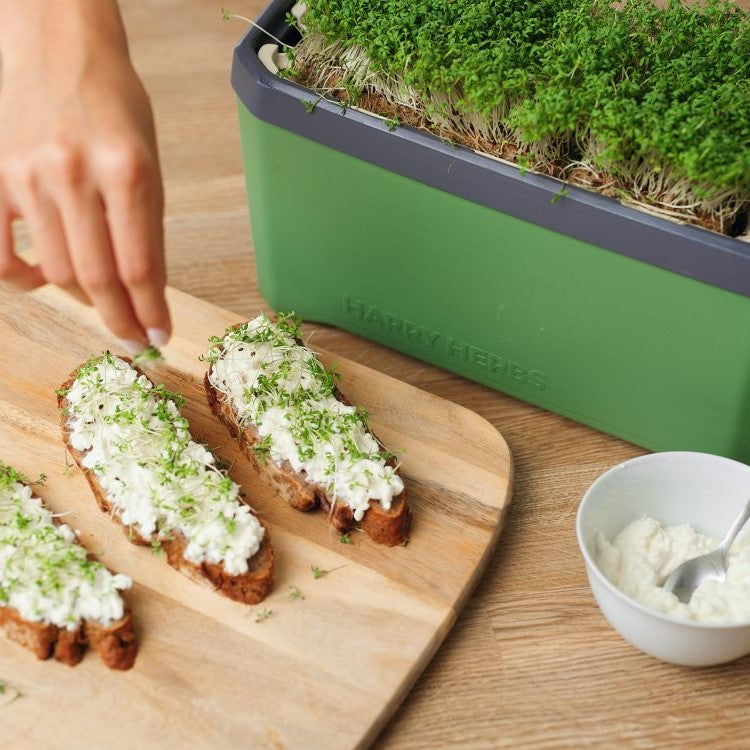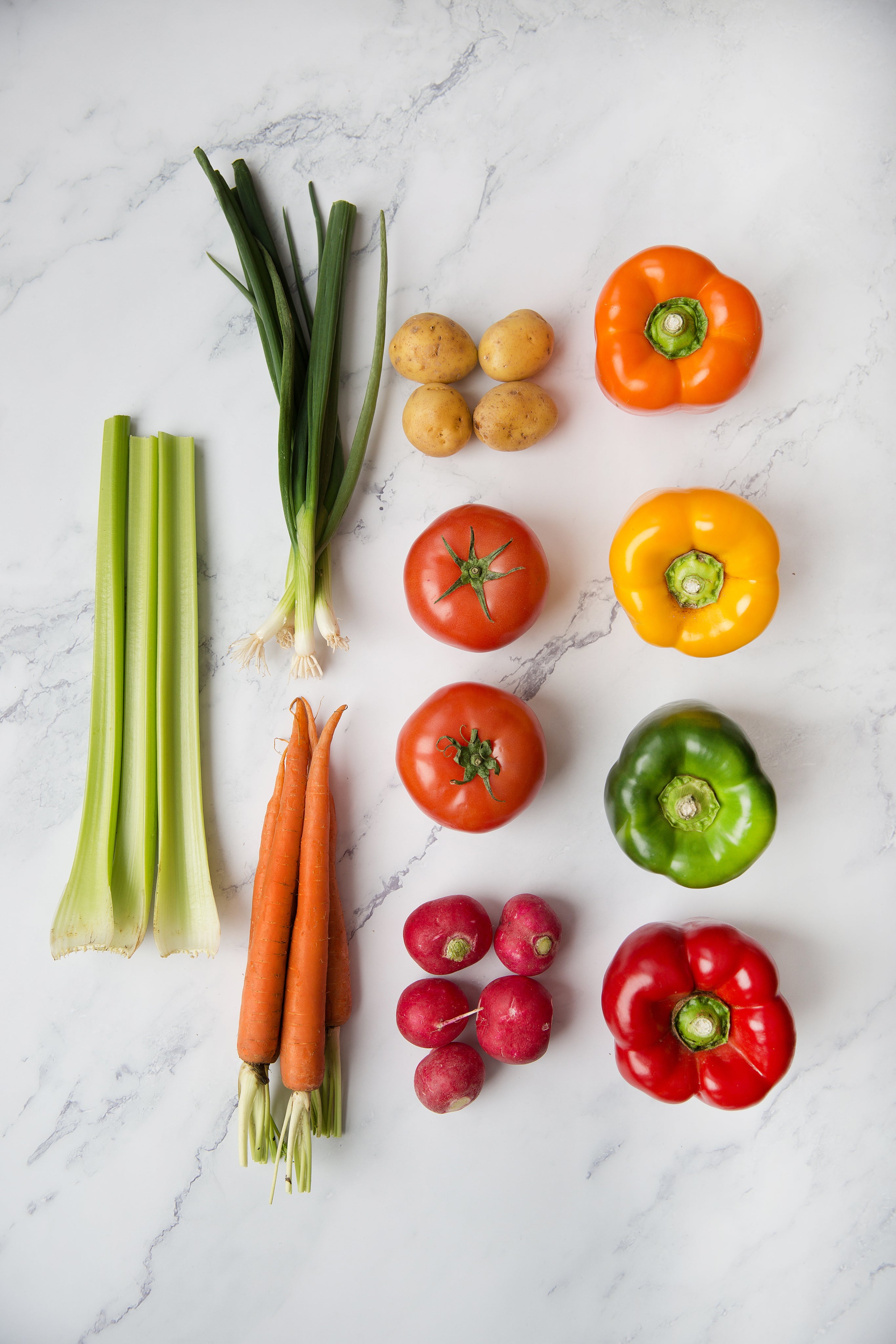 If you have planted your first microgreen seeds in your HARRY HERBS , you will probably be excited to watch their growth for the first few days. Depending on the variety, the first tiny seedlings can often form overnight. Sometimes the initial euphoria is followed by the first shock a few days later: a white, furry down appears on the seedlings. Are my microgreens moldy?
If you have planted your first microgreen seeds in your HARRY HERBS , you will probably be excited to watch their growth for the first few days. Depending on the variety, the first tiny seedlings can often form overnight. Sometimes the initial euphoria is followed by the first shock a few days later: a white, furry down appears on the seedlings. Are my microgreens moldy?
In short: most likely not. The chance that your seedlings will develop mold after a few days is extremely small. If you remove the hood of your HARRY HERBS once a day and wipe off any condensation that may have formed, you will minimize the risk again. What you probably see on your microgreens are the so-called microroots or root hairs . Microroots are an important part of your microgreens and help them to grow healthily and give you a rich harvest.
They occur more frequently in some varieties, for example radish and red cabbage. Root hairs are found on very young, still growing roots. They serve to increase the root surface area and improve soil penetration. So they are part of the natural growth process of your microgreens.
Gusta Garden tip
- If you are still unsure what is growing on your seedlings, we have 2 tips for you: Mold grows ON a plant, the root hairs are part of it. So if you can wipe the fuzz away or if it comes off very easily, it is actually mold. If you pull root hairs, the whole plant will move with it.
- If you're still not sure, just do the smell test. When mold forms, the growing tray smells musty and musty. Healthy plants spread an airy, fresh smell.
Visual comparison
Here you can also use the photos to compare whether your microgreens are actually mold or just microroots:
